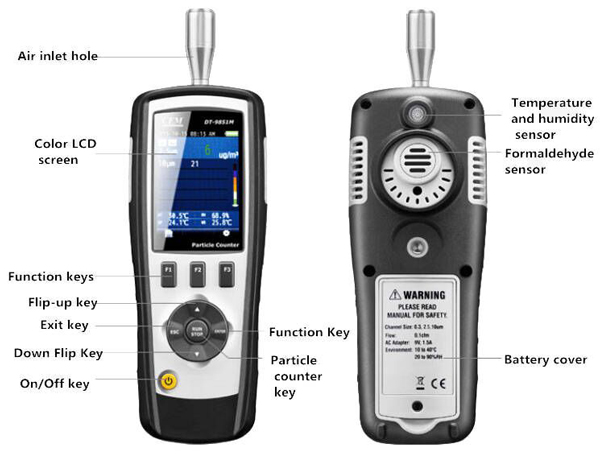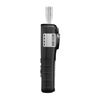What is a Particle Counter?
Particle counters, also known as particle counters or aerosol counters, have emerged as invaluable tools in various industries, including healthcare, environmental monitoring, and manufacturing. In this blog post, we'll delve into the world of particle counters, exploring their functionality, applications, and the key features that make them indispensable for monitoring and ensuring air quality.
Basic components
Particle counters consist of several key components that work in unison to accurately measure airborne particles. These components include an inlet and sample probe for air intake, a sensor or detector (often based on light scattering or blocking principles), a light source for illumination, an optics system to capture scattered or blocked light, a controlled flow system to maintain a consistent sample flow rate, a data processing unit for signal conversion, a user interface for interaction, data storage and connectivity options, a power source, a protective housing, calibration ports, and alarms for notifying of unusual conditions. Understanding this internal structure is crucial for proper operation, maintenance, and calibration, ensuring reliable and accurate particle counting data for various air quality monitoring applications.

Applications
- Indoor Air Quality Monitoring: Particle counters are used in homes, offices, and schools to monitor indoor air quality. They help identify pollutants, allergens, and particles that can impact human health.
- Cleanroom and Laboratory Environments: Industries such as semiconductor manufacturing, pharmaceuticals, and biotechnology rely on particle counters to maintain cleanroom environments and ensure product quality.
- Environmental Monitoring: Particle counters are used to monitor outdoor air quality, helping to identify pollution sources and assess the impact on public health.
- Medical Facilities: In hospitals and healthcare settings, particle counters are vital for infection control, as they can detect and monitor airborne pathogens.
- Aerosol Research: Researchers use particle counters to study aerosol particles, which have implications for climate science, atmospheric chemistry, and more.
Key Features of Particle Counters
- Particle Sizing: Particle counters can measure particles in various size ranges, from nanometers to micrometers, allowing for precise analysis.
- Real-Time Data: Many modern particle counters provide real-time data, enabling prompt response to changing air quality conditions.
- Portability: Portable models are available, making it easier to conduct air quality assessments in different locations.
- Data Logging: Particle counters can store historical data for trend analysis and regulatory compliance.
- User-Friendly Interface: User-friendly displays and intuitive software interfaces make these devices accessible to a wide range of users.
Choosing the Right Particle Counter
Selecting the most suitable particle counter for your specific application is crucial to ensure accurate and meaningful data. Here are some key factors to consider when choosing the right particle counter:

- Particle Size Range: Particle counters are designed to measure particles within specific size ranges. Ensure that the counter you choose can detect particles relevant to your application. For instance, if you're interested in monitoring fine particulate matter in outdoor air (PM2.5 or PM10), your particle counter should have a corresponding size range.
- Data Output and Reporting: Determine the data output options that best suit your needs. Some particle counters offer basic numerical readouts, while others provide more advanced data, such as particle size distribution graphs or data logging capabilities. Consider the level of data analysis you require.
- Environmental Conditions: Consider the environmental conditions in which the particle counter will be used. If you need to conduct measurements in harsh or extreme environments, opt for a particle counter with the necessary durability and protection against dust or moisture.
- Portability: Depending on your application, you may need a portable particle counter to perform measurements in various locations. Portable models are compact, lightweight, and often battery-powered, making them ideal for fieldwork.
- User-Friendly Interface: Consider the ease of use and the user interface. A user-friendly interface is essential, especially if multiple individuals will be operating the particle counter. Look for models with clear displays and intuitive controls.
- Data Storage and Reporting: If you need to maintain records for regulatory purposes or trend analysis, choose a particle counter that offers data storage and reporting capabilities. These features allow you to keep historical data and generate reports as needed.
Particle counters are test and measurement tools for monitoring and ensuring air quality in a wide range of industries. From healthcare and cleanroom environments to outdoor air quality assessments, these devices provide accurate data that is essential for maintaining a safe and healthy environment. Go to the ATO store to buy and use high-quality particle counters to protect a safe and healthy environment.

